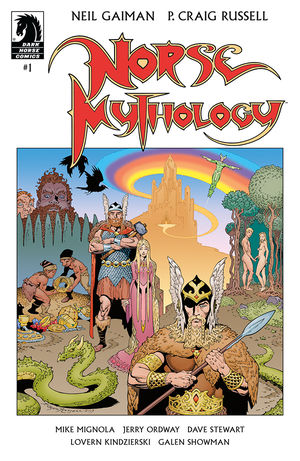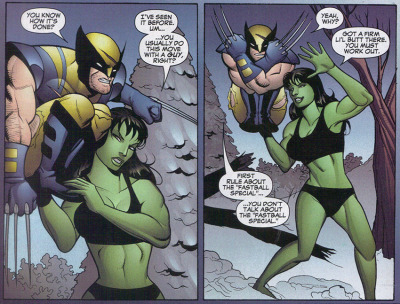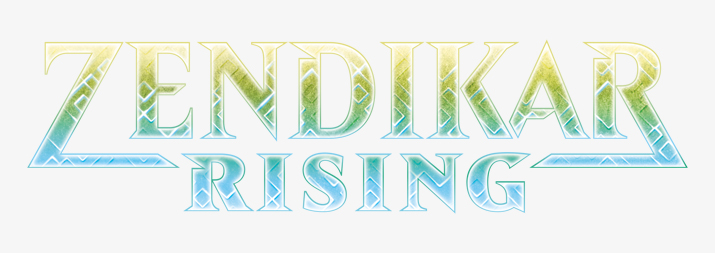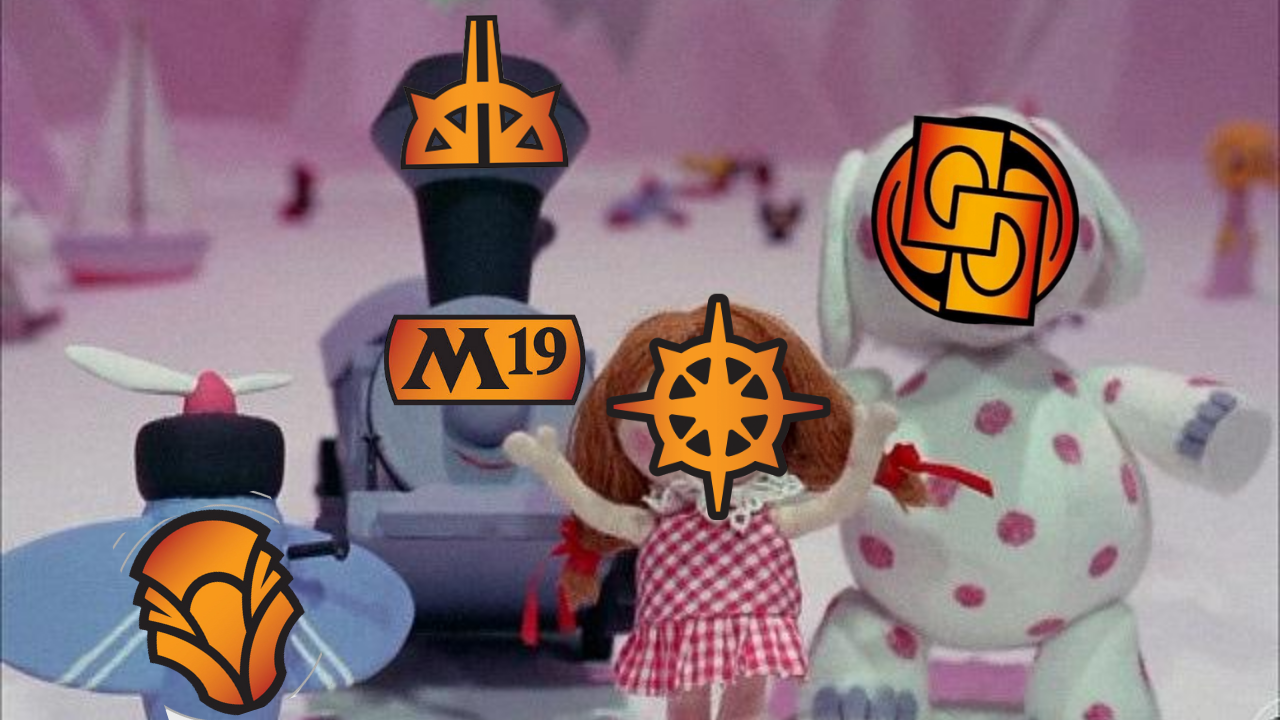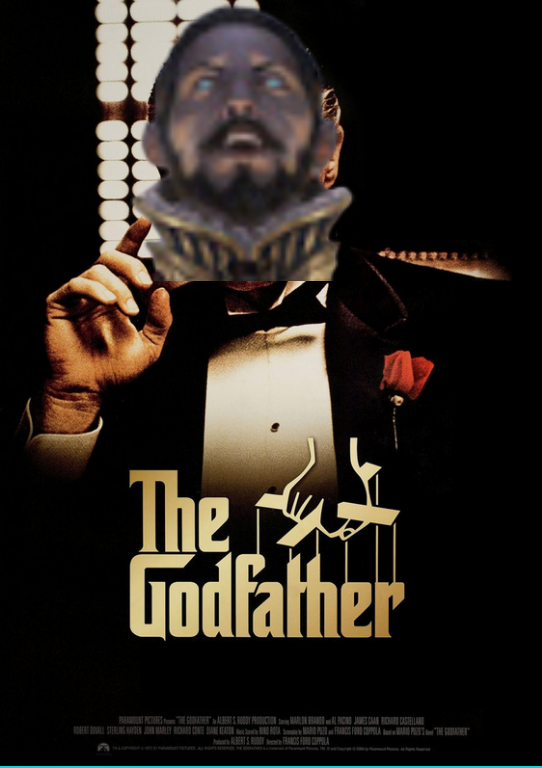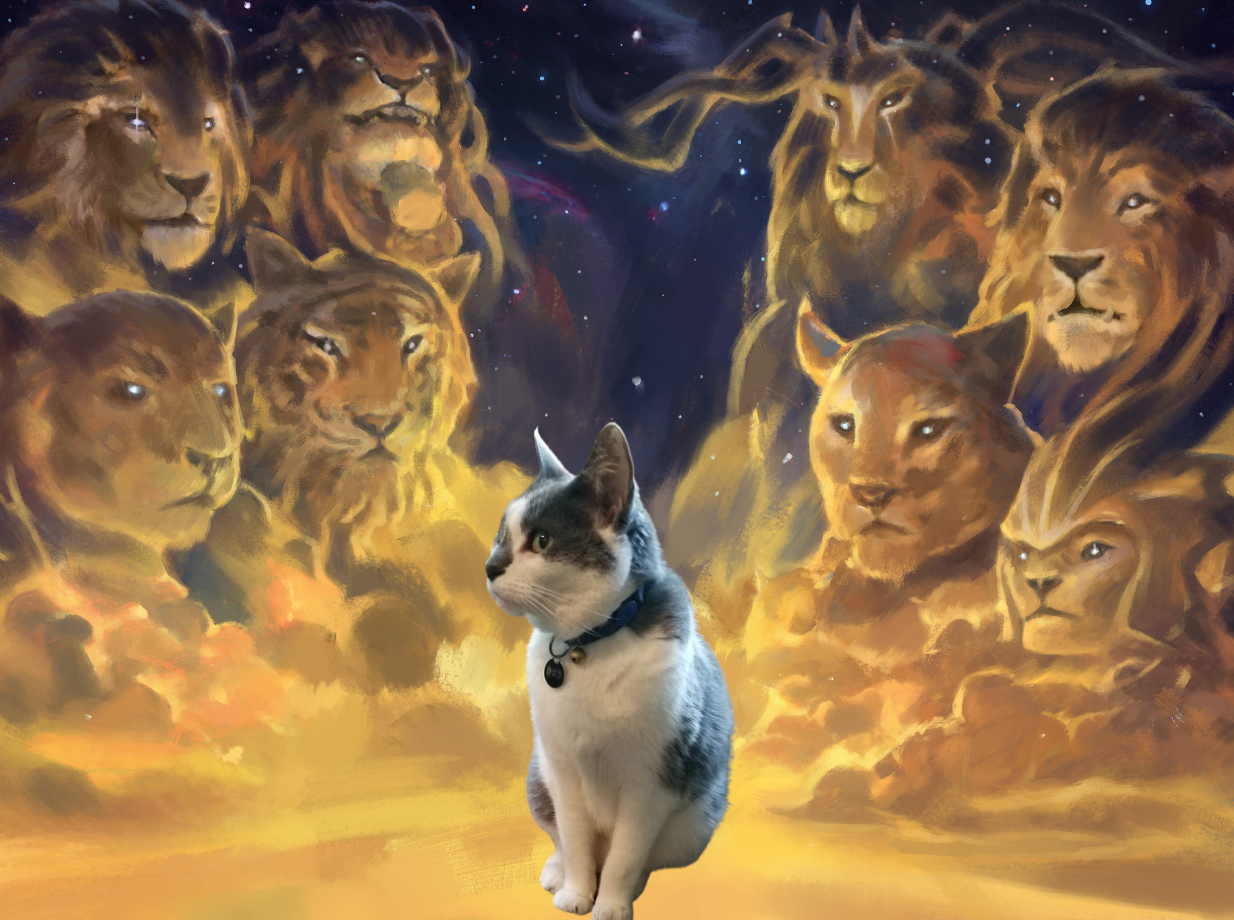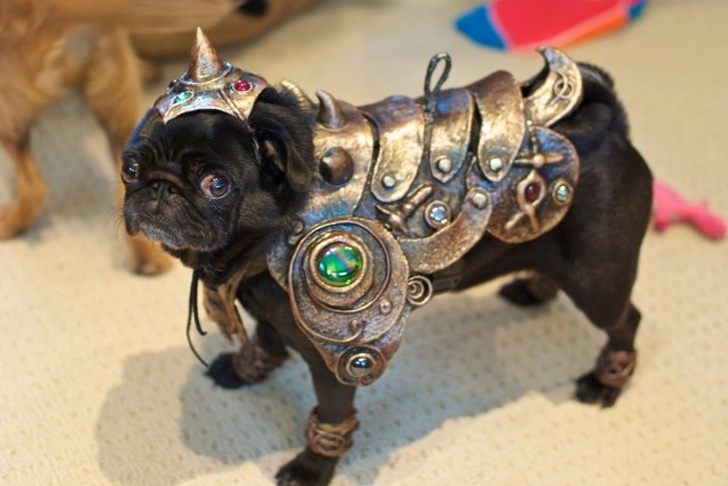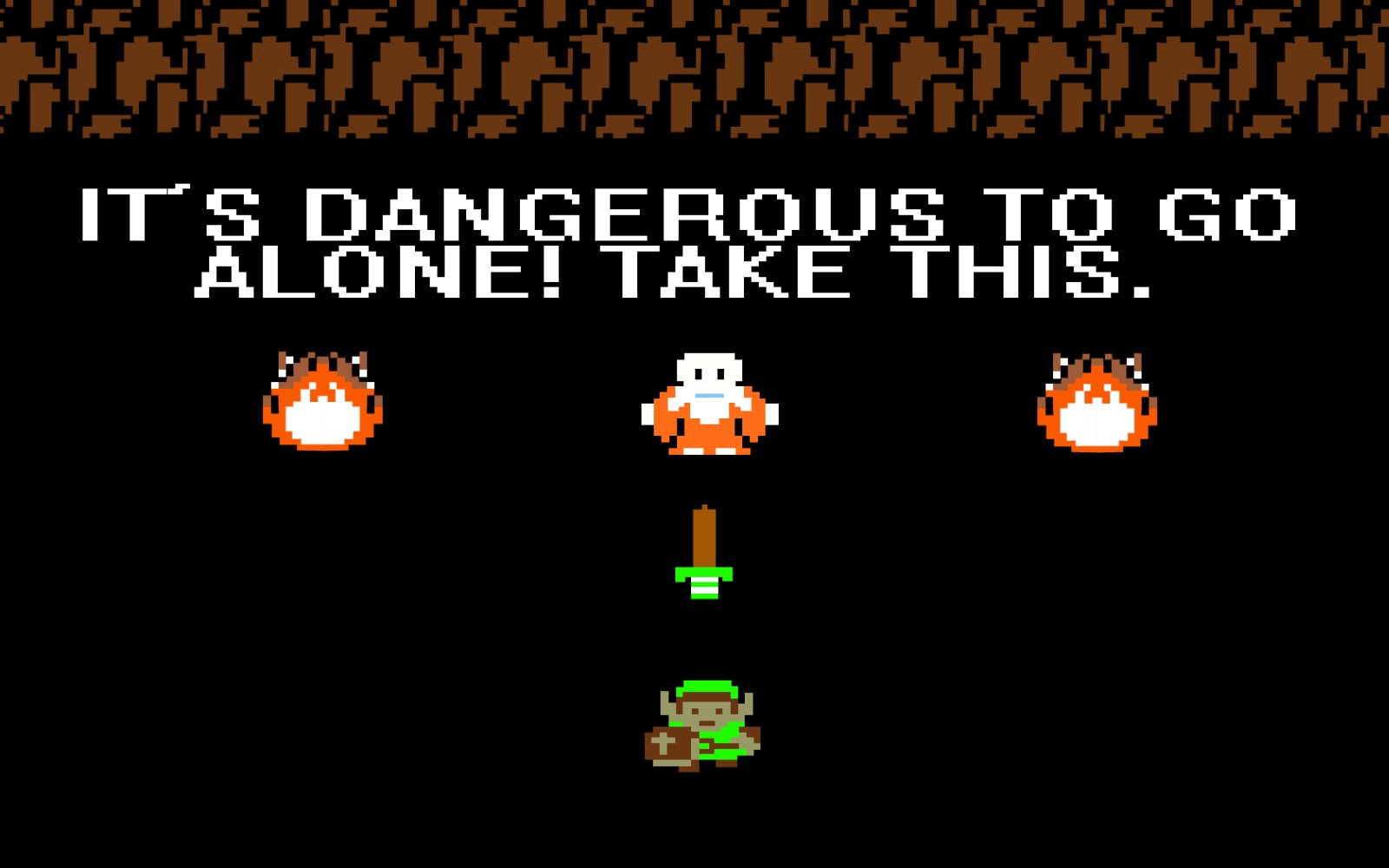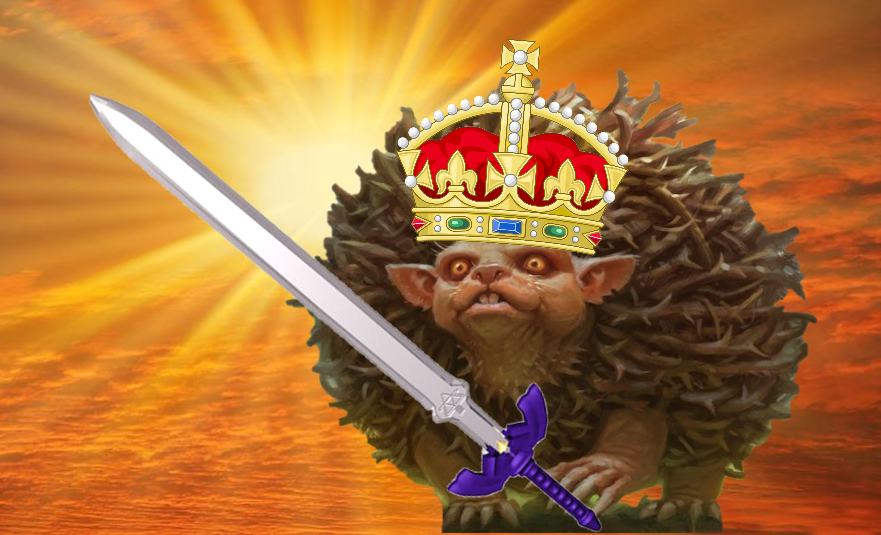Well, Ladies and Gentlemen, it’s been an exciting 10 whole weeks since I made my fateful New Years Resolution to Brew. More. Decks. And brew I did. But, like all things, the Year of Brew must continue to change and evolve. So I’ve decided to divide the Year of Brew… into ARCS.
That’s right, this grand adventure we’ve embarked on will have multiple phases with a theme to keep things interesting and focused. So the posthumously named Arc of New Beginnings has ended after a solid 10 deck run, and a new challenger approaches: the Arc of the Power of Friendship (I’m a big anime fan, okay?). This arc will be comprised of a series of decks that in one way or another involve my 3 other compatriots here at The Hexdrinkers. How? Well, you’ll just have to stay tuned to find out.
But, let’s not forget our dear friend the Arc of New Beginnings just yet! Given that I’ve been able to play most of these brews multiple times, I wanted to give a quick retrospective of how they turned out. (small disclaimer: the rest of the Hexdrinkers were pretty good about allowing me to play all of these decks and adjusting their deck choice to match each deck’s power level. I know that some of these are are meme-y or vary wildly in power level)
Week 1: Wizard Aggro
A theme of this Arc, and ideally the Year of Brew as a whole, has been moving out of my comfort zone. Which for a control mage, means…. Aggro decks. And I have to say, they’ve been pretty fun! This wizard tribal aggro deck headed by
Naban, Dean of Iteration
is no exception.
I was able to play this deck twice, but unfortunately came up with no wins. The disruption provided by our bounce wizards, as well as doubling triggers with Naban was excellent and allowed for us to ABA (Always Be Attacking). Also, Naban himself being 2 mana allowed us to start the beatdown quickly. Additionally, all of our equipment (of which we’re playing some real heaters) put in real work for me and helped to make our generally (stat-wise) unimpressive wizards more potent threats.
However, this deck didn’t have as much staying power as I would have liked. A combination of little resiliency to wraths and not churning through our deck at nearly a fast enough clip caused serious performance issues. (Which I suppose is what we get for playing a mono blue deck with basically no instants or sorceries.) In addition, Naban got killed… a lot. So that sweet, sweet double value we were counting on was being constantly disrupted, and paying 6 for our commander instead of equipping swords and playing more wizards is not ideal.
That being said, I think this deck could be tuned up with some more traditional disruption, protection, and card velocity, as well as adding another couple mana sources (I got a bit screwed in one game and felt constricted the other, sapphire medallion putting in a lot of work).
Overall, this deck gets a rating of… Sure. This’ll work.
Original Article
Week 2: Jund Tokens
An early contender for my favorite deck is this heater. I used to hate token decks, but there’s something truly liberating about amassing ranks upon ranks of small creatures and overwhelming your opponents (more on that later). I played 3 games with this and won 2, not shabby at all!
This deck can be a little slow to move, given our commanders are fragile and cost 3 and 4 mana, respectively. Normally that’s cheap for a commander, but it means we generally aren’t ramping or doing much else the first few turns because we want to curve Falthis into Tana and start attacking to make tokens ASAP. After that we can focus on making sure Tana continues to connect and playing good support or slamming some of our beefy token generators.
Now, although this is a token deck, it can win outside of the traditional million weenie Alpha Strike. One game that I won was due to being able to assemble
Purphoros, God of the Forge
, a lethal card when we’re generating so many creatures, and
Goblin Bombardment
to finish off our mortally wounded opponents. Being Jund gives a lot of solid sacrifice themes that we don’t get in a more stereotypical Selesnya shell. The second game I won was due to a well-timed
Triumph of the Hordes
. This deck can generate some big tokens, so even though I didn’t have an astounding number of creatures on the field, I was able to sneak in and knock out two players in one fell swoop with some sweet sweet poison.
I don’t have much negative to say about this deck. If our army is ever thwarted with a wrath, this deck also gets a lot of the good Jund removal cards so we can play midrange, though rebuilding took longer than I had hoped. I will admit I got cute with some of my card selections, so I think this deck could do with removing some of the more conditional or less optimal token makers and include solid support or staples to glue everything together. And I will say that I never drew
Doubling Season
or
Parallel Lives
, so if you’re concerned about budget, this deck functions perfectly fine without them!
Overall, this deck gets a rating of… Good, with potential for greatness.
Original Article
Julian’s Updated Version
Week 3: Curse Politics
This deck, oh boy this deck. The original idea of using
Ardenn, Intrepid Archaeologist
to mix and match curses at will hit me like a lightning bolt and I was hooked. However, it worked more in concept than in paper. I played only a singular game with this deck. Because, in said game, I got stomped horribly.
I believe this deck suffers from two major flaws. First, I think in my brewing process, I was blinded by the cheekiness of the theme and committed too hard. The deck lacks proper removal and card draw, amongst other things. I definitely stalled out in the mid game and was merely only able to delay threats with goad type effects, never truly deal with them.
Second, this deck is… let’s say, highly meta dependent. The other Hexdrinkers generally don’t put up with my politicking shenanigans, so even if I was buffing their creatures, I still drew a lot of hate and was often at their mercy. Add that to the fact that the deck does minimal in terms of being proactive or truly protecting us and I was constantly being attacked. At one point I got
Starfield of Nyx
out to try and start the value train rolling again, but Chev used
Scavenging Ooze
to foil every trigger, despite me needing to target Eric. I made this fact abundantly clear, but Chev is a madman. Eric was also a madman that game and ended up winning by milling us all out, another reason why I didn’t get to do much with the deck.
All in all, I think this deck requires a tune-up so it can maintain normal bodily function, and also requires a certain environment or playgroup to be effective and fun. I still love the deck in concept and hope it can find its time and place under the sun.
But until then, this deck gets a rating of… Trash, don’t play it. SMH.
Original Article
Week 4: Giant Tribal
This deck is probably the most straightforward and fun deck to play in this Arc! The gameplan is simple: play giants and attack. And I did, winning 2 out of the 3 games I played with this deck.
This build is great for a laid back game where you’re more focused on chatting with your playgroup and partaking in food and beverage, or for the “one more quick game” at the end of the night (even though you have to get up early to grind at your day job cause you’re an adult, sigh). There’s a satisfying yet autopilot nature to the following line of play: draw, play land, play largest giant (or two if we’re lucky), attack whoever is open or tried to mess with our big bois.
And it’s highly effective! When playing traditional combat-based EDH, this deck can outclass most things and giants often have some underrated effects stapled to them. Also,
Ruhan of the Fomori
can often threaten commander damage kills. Utilizing our few giant-flavored burn spells could sometimes eliminate that pesky chump for a surprise elimination.
If I had any criticisms of this deck it’d be that it doesn’t have as much protection or ramp consistency as necessary for such a mana intensive tribe. Sometimes you don’t draw any of your mana rocks and all your 7-drops. Or you curve out and walk right into a wrath. Both of these issues can be fixed with some simple deck building adjustments, but more giants is more fun, so I haven’t made any sweeping updates yet. Also, be very very careful when playing
Favor of the Mighty
. I know it’s tempting but with an
The Ur-Dragon
flying around…you can imagine the self-own.
Overall, this deck gets a rating of… Hell yeah, brother! Hulk smash!
Original Article
Julian’s Updated Version
Week 5: Landfall Without Green
This deck is probably the most ambitious deck of the Arc. It was a blast trying to come up with all the ways I could maximize Landfall triggers and utilize the unconventional methods at my disposal to max out value the hard way (you damn Zoomers and your land ramp dependencies). All in all, I think it’s a good start with some unique and interesting lines of play, but didn’t quite get there.
I only played a single game with this deck and sadly did not claim the W. Breya is a great value commander and helped my coverage as I attempted to set up big turns. In addition I got a lot of value from the bounce subtheme present in the set, whether that was returning my own permanents for value or for tempoing my opponents. However, overall the Landfall fell short, either because I wasn’t able to assemble enough triggers for real value, or because I drew my payoffs too late in the game.
The biggest hurdle for this deck is the manabase. Four colors is a lot and several of our cards have double pips. Also, I wasn’t as liberal with the manabase budget as in other brews so the lack of good dual lands really stalled my progress.
I think this deck has potential and it plays a lot of cards that deserve more love. However, it needs a major overhaul. Starting with the manabase and extending all the way into which staples to add for consistency and which Landfall cards to keep and focus on, this makeover will take some serious big brain power. But I plan on undertaking it as a side project and hope to present a new and improved version later on in the Year of Brew.
Until then, this deck gets a rating of… So close, yet so far.
Original Article
Week 6: Chaos in the Red Zone
This monstrosity is like the giant deck’s evil doppelganger. They have similar and straightforward gameplans of getting into the redzone as much as possible, though this deck causes much more chaos (obviously) and has more nuance than you might think.
Once again, this deck has only had a singular game under its belt. It was able to do its thing and I enjoyed it more than expected, but it’s not a deck that can be whipped out every game night. It’s a once in a while, special treat.
When I say the deck was able to do its thing, I mean that everyone was attacking all the time and dealing ungodly amounts of damage. I was in the weirdly fortunate position of having an opening hand with mostly lands and a few highly-costed bangers. Not what you’d usually want in a deck that loves combat. However, this allowed our opponents to focus on each other while I hit land drops and was able to curve out nicely:
Furnace of Rath
,
Kardur, Doomscourge
,
Geode Rager
,
Molten Primordial
,
Insurrection
.
As I was nonchalantly and metaphorically getting away with murder (seriously, my draws should not have lined up so perfectly), everybody was taking huge chunks out of life totals thanks to Furnace. Multiple instances of Goad, especially with Geode, made sure the heat was off of me so I could watch the world burn. Finally, I should have won with that Insurrection, but Eric was able to
Swords to Plowshares
his own
Marath, Will of the Wild
which had gotten frighteningly large. I attacked and reduced him to life support levels, but Oak was able to then cast
Akroma’s Will
and counterstrike the rest of us, who had fallen to dangerously low life (thanks again, Furnace).
Nearly got there, but alas, chaos was sown and the game was indeed a quick one. Overall, this deck gets a rating of… Hope you’re prepared, you sadistic bastard.
Original Article
Week 7: Araumi Hates You (and Me Too)
This deck is the only one so far that I wasn’t able to play with because we basically never play pauper. I’m hoping to coerce the boys into a pauper night at some point, but we’ve all been brewing a lot (for regular EDH) and people want to test those decks. That being said, I don’t think the group would appreciate this brew, it was definitely made to be a little mean and deny our opponents any resources. So maybe it’s for the best that it hasn’t made it out of the cage. I do hope I get to try it one day though, and when that day comes, I’ll be sure to report back.
On a side note, Eric made a normal
Araumi of the Dead Tide
mill deck. And I hate it. So maybe that’s all the data I need and I can interpolate to my list. Anyway, for now, this deck gets a rating of… …the world may never know.
Original Article
Week 8: Selesnya Tokens
My favorite and most successful deck from this Arc by far is the
Maja, Bretagard Protector
list. That’s probably because this is much less a brew and more a take on a straightforward commander, but I wanted to give some love to Kaldheim, and Maja is uncommon. But damn, does she put in work like a mythic. I’ve played 4 games with this deck and won 3 of them.
First off, this deck ramps hard. It’s not uncommon to get nearly all of your basics out and have 15+ lands on the field. I have cast
Finale of Glory
with X > 10 every game, which feels So. Damn. Good. And we have all the greatest landfall token generators such as
Emeria Angel
and
Rampaging Baloths
, as well as Maja to assemble huge armies in the blink of an eye. Because the token generation is basically incidental to something we want to do anyway, this deck is more efficient, especially in the early game, than the Jund Tokens list from Week 2.
It’s also much more straightforward. Amass a dominant boardstate and then attack to eliminate as many opponents as you can, rinse, repeat. No sacrificial themes or sneaky lines of play, just raw power. Another point in the Maja column is this deck can rebuild much quicker than Jund and has so much more resilience with all of its
Heroic Intervention
effects, which I have had to use sometimes twice or thrice a game to weather a chain of Wraths.
The only critiques of this deck are that it’s generally more linear than other decks I normally play. It’s not a thinking man’s deck. But, it still is a lot of fun and it puts up results. Overall, this deck gets a rating of… <3 <3 <3
Original Article
Julian’s Updated Version
Week 9: Digging for Treasure
This deck, ohhhh, this deck… I’ve had this deck in the brewing pipeline since the second week of the Year of Brew. It started as a pirate tribal deck off my hype from Commander Legends, but quickly I realized that another tribal or aggro deck would be redundant, and, getting janky with artifact tokens is much more my speed.
And thus, the treasure “tribal” deck was born and maximum jankitude was achieved. I played two games with this deck, neither of which I won, but one game was much more successful than the other. The first game, which was largely unsuccessful, showed the major weaknesses of this deck: the lack of solid staples to make the deck have a base level of functionality, and the overloading of cards that make treasure, which are generally underwhelming. Are you sensing a theme yet?
That game, I didn’t get to do much, but it was fun to play in character and talk about plundering booty. The second game I played was much more fruitful and helped me see a clearer path for this deck to succeed. An early
Reckless Fireweaver
along with several recurring token makers really helped whittle my opponents down. Then
Brass’s Bounty
into countering a 7-drop with
Spell Swindle
finally put me on everyone else’s radar… which meant they countered my
Tezzeret, Master of the Bridge
and promptly killed me the next turn.
This deck I feel would greatly benefit from removing the more mopey treasure makers, add in some ways to replicate our tokens and then load up on cards that care about artifact ETBs. It’s more generic, but would make this deck feel less all or nothing. It’s always a struggle to have to compromise adherence to a theme with playing generic good cards to stand a chance, but I think this deck can strike a balance of not fully “selling out.”
Overall, this deck gets a rating of… With time and patience, the path to enlightenment will be achieved. Which is the opposite of what a pirate wants to hear, but we’re dropping the pirate theme anyway. Probably should kick
Admiral Beckett Brass
’s ass to the curb as well.
Original Article
Week 10: Tall and Wide?
This deck was the hardest to brew for me by far. I wanted to choose another mono-colored commander, so I decided that I would pick a general from one of, if not the, most powerful mono-colors, Green (damnit, modern Magic design). However, I couldn’t just choose a mainstream legend, I wanted to give some love to those fallen by the wayside and I came across
Anthousa, Setessan Hero
.
During the brewing process, I immediately saw why. Anthousa is conflicted between going tall and wide. She wants Heroic triggers, which lends itself to auras and pump spells, but then she animates her lands, lending itself to a swarming strategy. She’s also from the era before land-animation was perfected to include vigilance/haste/untap/etc like we’ve seen with
Nissa, Who Shakes the World
,
Kamahl, Heart of Krosa
, and
Nissa of Shadowed Boughs
. The lands animated with Anthousa don’t untap, are small 2/2’s, and have no protection or evasion. Overall, the lands were generally underwhelming and often either chipped in on an opponent who already wasn’t doing anything or I chose to not animate at all.
In addition, Anthousa is under-statted relative to the format. A 4/5 for 5 mana is extremely medium and pump spells that would push her over are either bad or subpar in a multiplayer format. The final way I found to get Anthousa through while also triggering Heroic, was with fight spells. There’s a good amount of
Clear Shot
or
Savage Punch
effects in green to play. In the one game I played this deck, I was able to get in consistently by continually fighting the creature Oak would play for turn and then smack him with Anthousa. However, you can’t rely on your opponents to only have a single creature out, and I was completely walled once someone played a 7/7, god forbid any indestructible creature.
Ultimately, this deck is plagued by a disjointed gameplan, a lack of drawing cards (I was relatively lucky with how many fight spells I drew), and an underwhelming commander, stat-wise and CMC-wise. I don’t think a deck truly built around Anthousa can ever breach the mediocre level in a format such as Commander. A deck utilizing Anthousa for value while relying on the overwhelming power of green staples could be successful, but I doubt it would maintain the spirit of the Setessan Hero.
Overall, this deck gets a rating of… Why do only the good die young?
Original Article
And Now, Into the Unknown
Well, that’s all for now! 10 decks and 1 arc down, many more to go. I’ll do recaps like this every arc and to introduce the next arc. If you have ideas, commanders, or color combos you want to see, make sure to hit up @Hexdrinkers on Twitter or email us at hexdrinkers@gmail.com to let your voice be heard. Until next time, stay safe, and stay brewing!
Find these decklists as well as the rest of the Year of Brew decklists at the Hexdrinker’s Moxfield page! For my (Julian) updated versions of my favorite decks and for updates that may happen in the future (cough cough No G Landfall and Treasure cough cough), follow my Moxfield page.
The Year of Brew
Commander















































































































































































































































































































































































































































































































































































































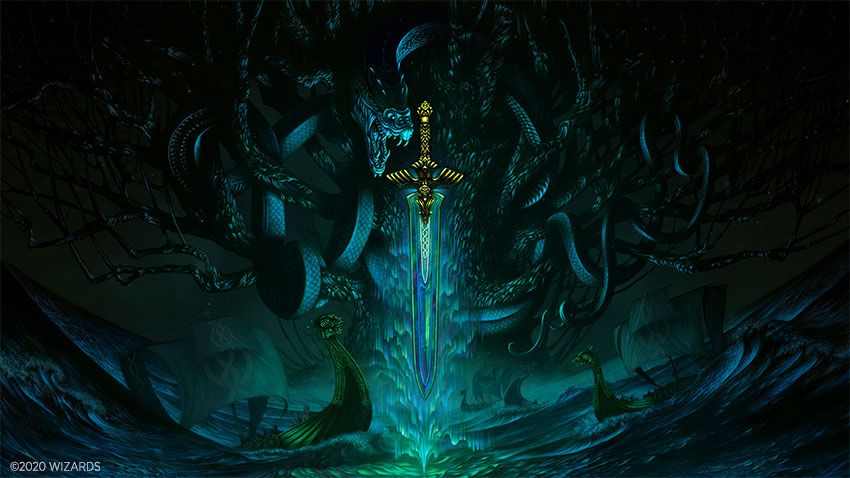
:format(webp)/cdn.vox-cdn.com/uploads/chorus_image/image/59594887/God_of_War_Valkyrie_guide.0.jpg)

